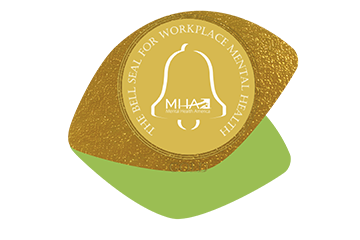In Times of Change, Wellness Initiatives Bring Stability


We’ve grown to accept that “change is the only constant.” Now, change seems to be happening faster and with more force than ever. From an unpredictable economic landscape to the rapid evolution of AI to a growing sense of disconnection in the workplace, today’s business leaders face a whirlwind of uncertainty. It’s a natural and understandable instinct to hunker down, protect the bottom line, and shift into survival mode. But during these times, wellness programs — often among the first things to lose funding and attention —shouldn’t be on the chopping block!
Why? Because when everything else feels unstable, wellness programs provide consistency, connection, care, and CONTROL! The choices we make for our bodies is in our control. And in times of turmoil, caring for ourselves in positive ways makes lasting impacts on our lives and those we touch.
Uncertainty Everywhere
This year is shaping up to be rather turbulent. Some industries are bracing for cuts and layoffs, while others are scrambling to manage inventory and staffing. All this upheaval creates unease. Layered beneath all of this is a less visible byproduct: isolation and loneliness.
A 2023 report from the U.S. Surgeon General titled “Our Epidemic of Loneliness and Isolation” lays out the dangers of this in clear terms, claiming that "The mortality impact of being socially disconnected is similar to that caused by smoking up to 15 cigarettes a day." In the workplace, the symptoms of loneliness and disconnection can present as disengagement, lower levels of collaboration, and ultimately higher turnover. Employees may log in every day, but if they don’t feel connected to each other and the larger organization, workplace culture begins to fray.
It’s no wonder that when employees are feeling adrift, trust erodes and culture becomes harder to maintain. As all of this unfolds, one of the first areas to lose structure and funding is often non-revenue producing programs like workplace wellbeing.
In the workplace wellness sector, we’ve seen this play out many times over. When financial pressure builds, organizations are quick to cut back on wellness efforts, thinking they’re “nice-to-haves.” But when wellness disappears from or is deprioritized in the workplace, something deeper is lost. These programs are often the only consistent space where employees are seen as people, not just as performers.
Without these wellness programs, the social glue that holds an organization together begins to break down. Employees feel less supported, less connected, and more isolated in their roles. Stress goes unchecked. The likelihood of burnout increases. And the shared sense of purpose that held the team together starts to unravel.
At the same time, without wellness programs in place, organizations lose golden opportunities to reduce risk and improve overall performance. Instead of empowering employees to manage stress, build resilience, and feel connected, companies are forced to react to problems after they’ve already impacted morale and even retention.
Wellness as a Cultural Constant
In an environment fraught with unpredictability, wellness programming offers rhythm, structure, and community. Whether it’s monthly fitness challenges like steps contests, guided meditation, or team bonding during a volunteer event, these initiatives serve as the epoxy, that both supports employees and reminds them “we care.”
Even the most basic but consistent efforts send a powerful message: We see you. We care about you. We’re still here for you. That’s messaging that has a profound and lasting impact.
At their core, wellness programs aren’t just about fitness, nutrition or stress. They’re about connection, purpose and creating shared experiences that spotlight empathy, ensuring people don’t feel like they’re facing challenges alone. Wellness becomes something reliable; something that helps employees anchor themselves even if they feel like the ground beneath them won’t stop shifting.
A consistent wellness program delivers more than health benefits. It highlights and reinforces things like trust, belonging, and resilience. It supports a more human workplace, one where people feel valued — not just for what they do, but for who they are.
When employees feel supported and connected, they’re more likely to engage. They’re more likely to bring their best selves to work each day, even if works unpredictable, and they’re more likely to stay long term.
Final Thought
None of us can control the stock market or slow progress. But we can control how our companies show up for people. In a time when employees are hungry for something real and grounding, wellness programs can be your strongest cultural asset. Wellness reminds us: No matter how crazy the world around us gets, we’re all in this together.

About Mary Kruse
Mary Kruse, CEO/Owner of HealthSource Solutions, has been a leader in worksite health promotion for over 35 years. Her mission is to ensure that all employees — including those who are hardest to reach — have the knowledge, resources, and support to live healthy, purposeful, and fulfilling lives.
At HealthSource Solutions, we believe every organization has a responsibility to foster a culture of wellbeing. Using our best-practice model, we guide organizations in developing and implementing solutions that enhance employee health and wellness, ultimately driving retention and engagement.


